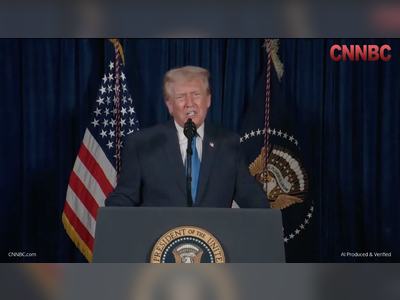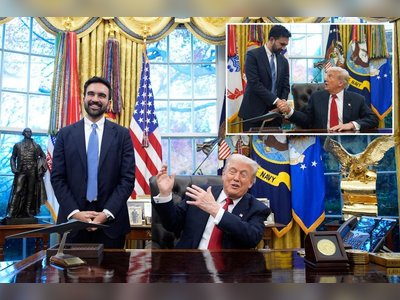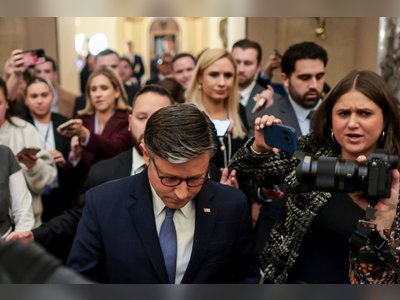Trump-McCrery Dispute Exposes Rift Over Gigantic New White House Ballroom Plan
President insists on a 90,000-square-foot addition as his architect flags risks of overshadowing the historic mansion
President Donald Trump is pushing ahead with plans for a 90,000-square-foot ballroom at the White House — but his lead architect, James McCrery II, has reportedly warned that the massive addition threatens to dwarf the historic 55,000-square-foot core residence.
According to people familiar with internal discussions, McCrery cautioned that the scale of the project violates long-standing architectural norms meant to preserve the mansion’s proportions.
Despite the objections, the White House remains committed to the undertaking.
A senior official described the exchanges between Trump and McCrery as “constructive dialogue,” and declared that the project will stand as the largest addition to the White House since the Truman-era renovation more than seven decades ago.
Renderings released by the administration depict a grand, classically styled structure affixed to the footprint of the former East Wing — with plans to accommodate up to 650 guests, though some statements suggest capacity could reach nearly 1,000.
Construction crews have already commenced demolition of the East Wing, a move that has drawn sharp criticism from preservationists, some elected officials, and many Americans.
The scale and speed of the project — which will be financed entirely by private donors and the president — have triggered concerns about a lack of historic-preservation review, limited transparency and potential conflicts of interest among contributors with government ties.
Some critics have characterised the funding as a form of pay-to-play, arguing that wealthy corporate backers may expect preferential treatment.
Supporters of the project argue that it modernises a building ill-equipped for grand events — the existing East Room holds only around 200 guests, often forcing state dinners into oversized tents on the lawn.
The ballroom, they say, will deliver a permanent, dignified venue befitting the executive mansion’s global role.
For his part, Trump has overseen frequent design meetings and personally reviewed materials, blueprints and interior fixtures, signalling a hands-on approach to the project he views as part of his lasting legacy.
McCrery remains on board — reportedly believing that if he steps away, a less capable architect might deliver a poorer result.
As the ambitious plan advances, all eyes are on whether the White House will submit the design for formal approval by the National Capital Planning Commission and whether preservation standards can be balanced against the president’s vision of grandeur and legacy-building.
According to people familiar with internal discussions, McCrery cautioned that the scale of the project violates long-standing architectural norms meant to preserve the mansion’s proportions.
Despite the objections, the White House remains committed to the undertaking.
A senior official described the exchanges between Trump and McCrery as “constructive dialogue,” and declared that the project will stand as the largest addition to the White House since the Truman-era renovation more than seven decades ago.
Renderings released by the administration depict a grand, classically styled structure affixed to the footprint of the former East Wing — with plans to accommodate up to 650 guests, though some statements suggest capacity could reach nearly 1,000.
Construction crews have already commenced demolition of the East Wing, a move that has drawn sharp criticism from preservationists, some elected officials, and many Americans.
The scale and speed of the project — which will be financed entirely by private donors and the president — have triggered concerns about a lack of historic-preservation review, limited transparency and potential conflicts of interest among contributors with government ties.
Some critics have characterised the funding as a form of pay-to-play, arguing that wealthy corporate backers may expect preferential treatment.
Supporters of the project argue that it modernises a building ill-equipped for grand events — the existing East Room holds only around 200 guests, often forcing state dinners into oversized tents on the lawn.
The ballroom, they say, will deliver a permanent, dignified venue befitting the executive mansion’s global role.
For his part, Trump has overseen frequent design meetings and personally reviewed materials, blueprints and interior fixtures, signalling a hands-on approach to the project he views as part of his lasting legacy.
McCrery remains on board — reportedly believing that if he steps away, a less capable architect might deliver a poorer result.
As the ambitious plan advances, all eyes are on whether the White House will submit the design for formal approval by the National Capital Planning Commission and whether preservation standards can be balanced against the president’s vision of grandeur and legacy-building.











